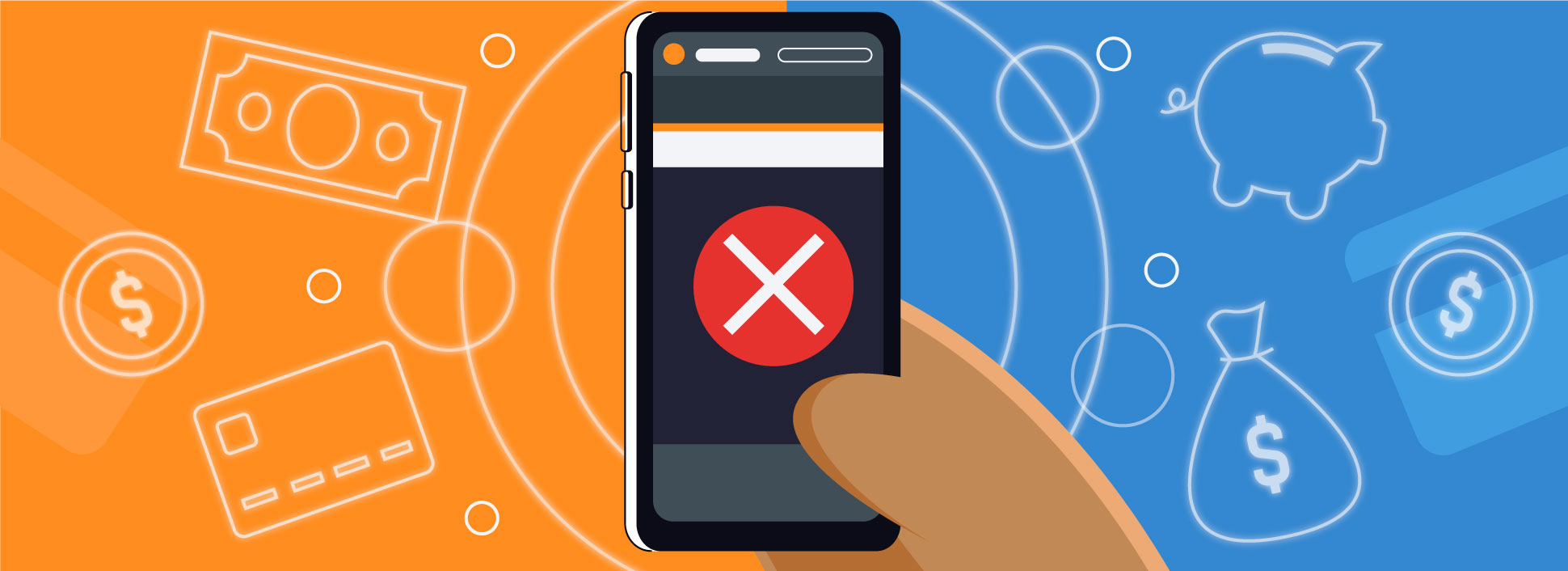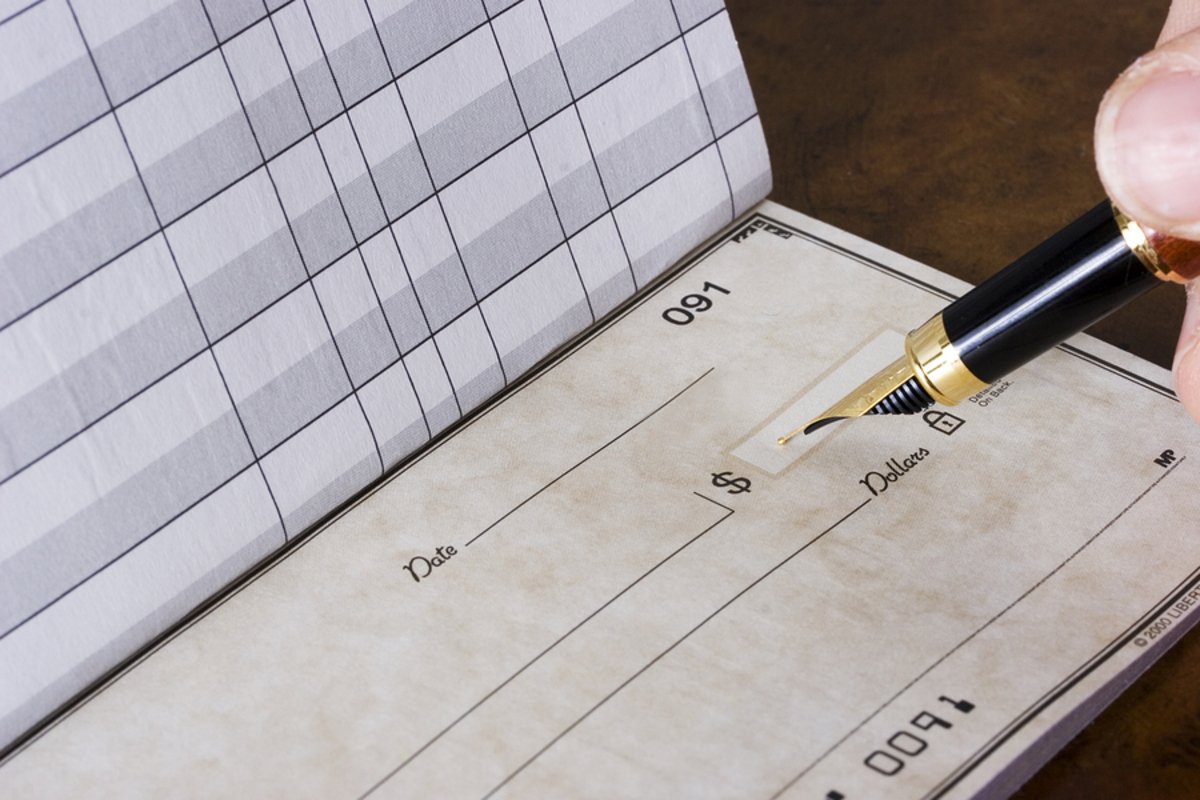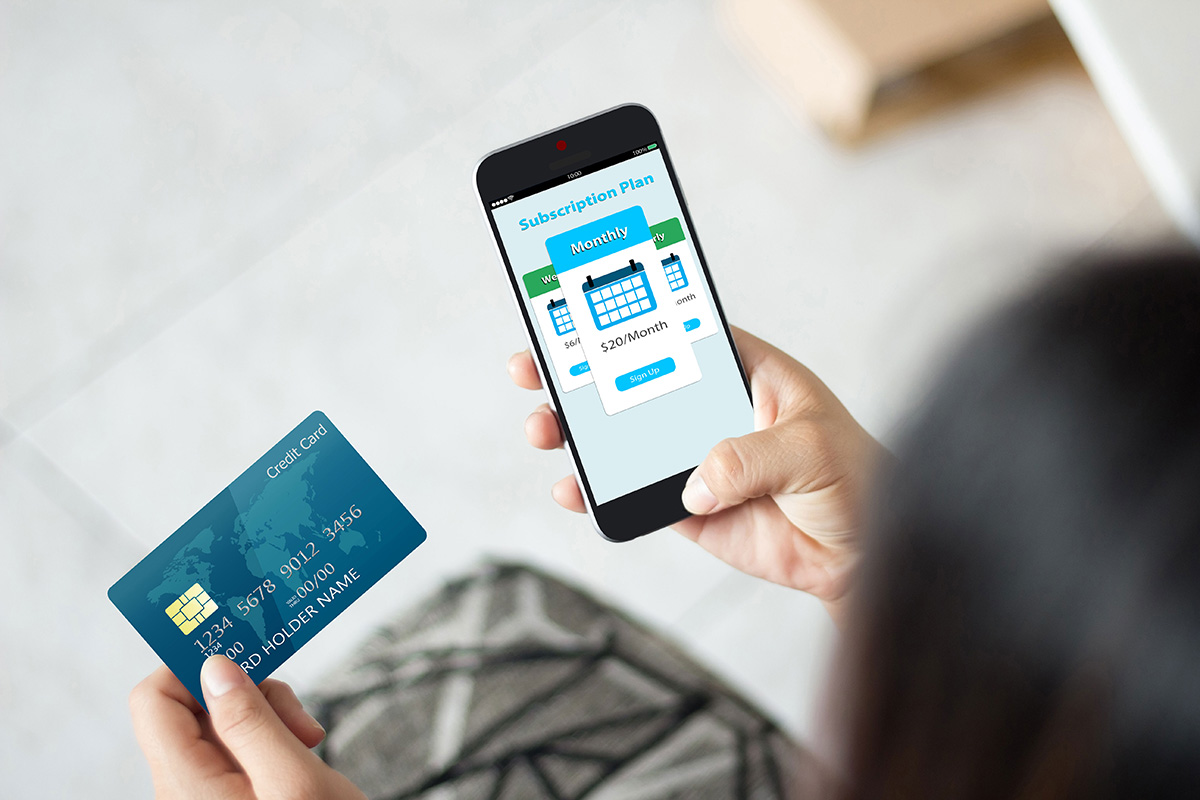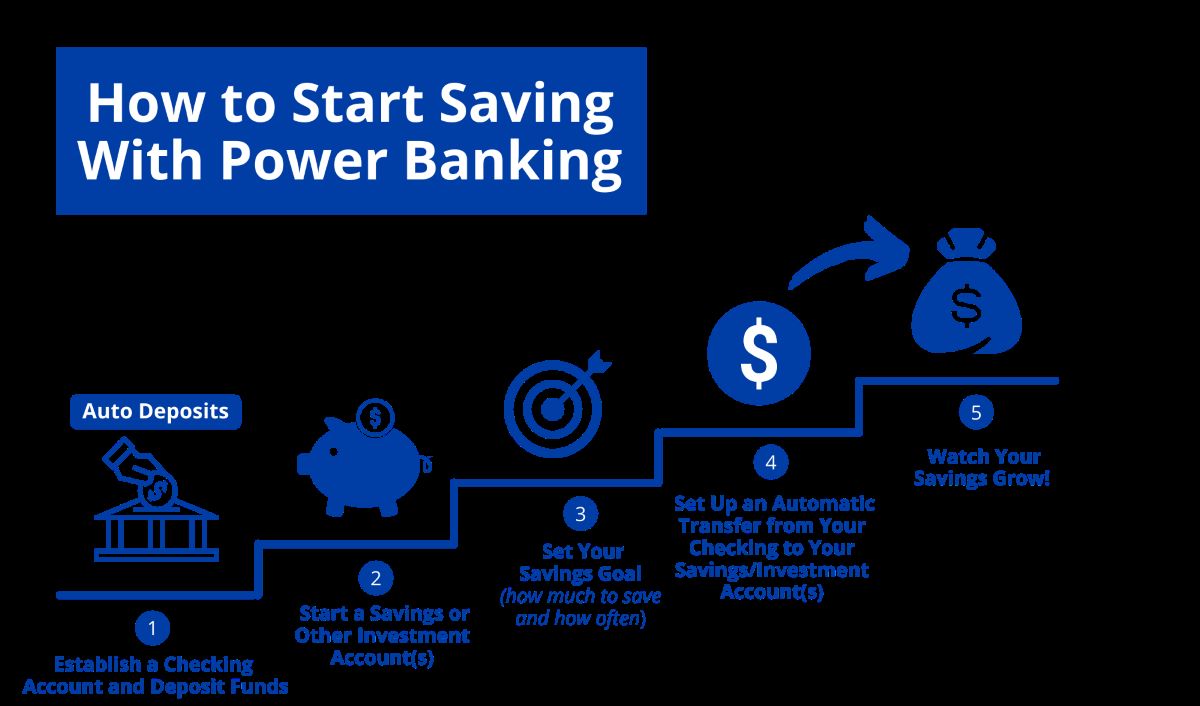Home>Finance>How To Stop All ACH Payments From Checking Account


Finance
How To Stop All ACH Payments From Checking Account
Modified: February 21, 2024
Learn how to stop all ACH payments from your checking account and regain control of your finances with our step-by-step guide. Put an end to unwanted transactions today!
(Many of the links in this article redirect to a specific reviewed product. Your purchase of these products through affiliate links helps to generate commission for LiveWell, at no extra cost. Learn more)
Table of Contents
- Introduction
- Understanding ACH Payments
- Why Stop ACH Payments?
- How to Stop ACH Payments from Your Checking Account
- Option 1: Contacting the Bank
- Option 2: Placing a Stop Payment Order
- Option 3: Closing the Checking Account
- Option 4: Revoking ACH Authorization
- Option 5: Working with the Payee
- Final Thoughts
- Conclusion
Introduction
ACH, or Automated Clearing House, payments have become a popular and convenient way for individuals and businesses to make electronic transactions. With ACH payments, funds are transferred from one bank account to another, allowing for seamless and efficient financial transactions.
However, there are situations where you may want to stop ACH payments from your checking account. Whether it’s due to fraudulent activity, unauthorized charges, or simply a need to regain control over your finances, stopping ACH payments can provide peace of mind and security.
In this article, we will explore the various reasons why you might want to stop ACH payments, as well as the different methods you can use to do so. From contacting your bank to placing a stop payment order, we will cover all the necessary steps to halt ACH payments and regain control over your checking account.
But before we dive into the methods, let’s take a closer look at what ACH payments actually are and how they work.
Understanding ACH Payments
ACH payments are a type of electronic funds transfer that allows money to be moved between different bank accounts. This electronic payment system is commonly used for direct deposit of paychecks, automatic bill payments, and online transfers. ACH payments offer a more convenient and cost-effective alternative to traditional paper checks and wire transfers.
The ACH network is operated by the National Automated Clearing House Association (NACHA), which sets the rules and regulations for ACH transactions in the United States. Banks and other financial institutions participate in the ACH network to facilitate the transfer of funds.
When you authorize an ACH payment, you provide your bank account details and give permission for the funds to be debited from your account. This authorization can be a one-time occurrence or a recurring agreement, depending on the nature of the transaction.
ACH payments typically take 1-2 business days to process, although some transactions may take longer. The funds are electronically transferred from the sending bank to the receiving bank, and the recipient of the payment can access the funds once they have been deposited into their account.
It’s important to note that ACH payments are governed by specific rules and regulations to ensure the security and integrity of transactions. These rules include requirements for customer authorization, dispute resolution, and handling unauthorized transactions.
Now that we have a basic understanding of how ACH payments work, let’s explore the reasons why you might want to stop these types of payments from your checking account.
Why Stop ACH Payments?
There are several reasons why you may want to stop ACH payments from your checking account. Here are some common situations where stopping ACH payments can be necessary:
- Fraudulent activity: If you suspect unauthorized charges or fraudulent transactions on your account, it’s important to act quickly to prevent further unauthorized ACH payments.
- Insufficient funds: If you don’t have enough funds in your checking account to cover an upcoming ACH payment, stopping the payment can help you avoid overdraft fees and returned payment charges.
- Canceling a recurring payment: If you want to cancel a recurring ACH payment, such as a gym membership or subscription service, stopping the payment will prevent future deductions from your account.
- Disputing a payment: If you believe that a payment made through ACH was made in error, or if you are dissatisfied with the goods or services received, stopping the payment can help you initiate a dispute and potentially recover your funds.
- Changing financial institutions: If you are switching banks or closing your checking account, stopping all ACH payments beforehand will ensure a smooth transition and prevent any unexpected charges or withdrawals.
Stopping ACH payments provides you with control over your finances and gives you the ability to address any issues or concerns that may arise. Now that we understand why stopping ACH payments can be necessary, let’s explore the various methods you can use to stop these payments from your checking account.
How to Stop ACH Payments from Your Checking Account
If you’ve decided that you need to stop ACH payments from your checking account, there are several methods you can use to do so. Here are five options that you can consider:
- Contacting the Bank: One of the first steps you can take is to reach out to your bank directly. Explain the situation and inform them that you want to stop all ACH payments from your checking account. They will guide you through the necessary steps and may require you to fill out a form or provide additional documentation.
- Placing a Stop Payment Order: Another option is to place a stop payment order on specific ACH transactions. You can do this by contacting your bank and providing them with the details of the payment you want to stop. Keep in mind that some banks may charge a fee for this service, and the stop payment order is typically only valid for a certain period of time.
- Closing the Checking Account: If you want to ensure that no further ACH payments are made from your account, you can consider closing the checking account altogether. Once the account is closed, all ACH transactions will be declined, and any authorized payments will need to be set up again with your new account.
- Revoking ACH Authorization: ACH payments require your authorization. If you want to stop a specific ACH payment, you can contact the company or individual you authorized to initiate the payment and request that they stop the transaction. It’s important to keep records of your communication to support any disputes that may arise.
- Working with the Payee: In some cases, reaching out to the payee directly and explaining your situation may be effective in stopping ACH payments. They may be able to assist you in canceling or pausing the payments until the matter is resolved.
It’s important to note that the effectiveness and feasibility of each option may vary depending on your specific circumstances and the policies of your bank and the payee. It’s advisable to carefully consider your situation and consult with your bank or financial advisor to determine the best course of action.
Now that we’ve explored the various methods to stop ACH payments, it’s time to wrap up and provide some final thoughts on the topic.
Option 1: Contacting the Bank
Contacting your bank directly is one of the first and most straightforward methods to stop ACH payments from your checking account. By reaching out to your bank, you can explain the situation and inform them that you want to halt all ACH payments. They will guide you through the necessary steps and ensure that your request is processed correctly.
When contacting the bank, it’s important to have relevant information readily available, such as your account details, any specific ACH transactions you want to stop, and the reasons behind your request. This will help the bank understand your needs and expedite the process.
Depending on the bank’s policies and procedures, they may ask you to submit a formal request in writing or fill out a specific form to stop the ACH payments. This documentation ensures that your request is properly recorded and processed by the bank.
It’s important to note that while contacting the bank is generally an effective method for stopping ACH payments, the bank may have specific cutoff times or processing limitations. Therefore, it’s crucial to act promptly and follow any instructions provided by the bank to ensure a seamless and timely resolution to your request.
Remember to keep a record of your communication with the bank, including the date, time, and the name of the representative you spoke with. This documentation will be valuable if any issues arise in the future or if you need to reference the details of your request.
By effectively communicating with your bank, you can take control of your ACH payments and ensure that they are stopped as desired. However, contacting the bank is just one of several options available to stop ACH payments from your checking account. Let’s explore another option — placing a stop payment order.
Option 2: Placing a Stop Payment Order
Placing a stop payment order is another method you can use to stop specific ACH payments from your checking account. This option allows you to prevent a specific transaction from being processed by your bank, effectively stopping the payment.
To initiate a stop payment order, you will need to contact your bank and provide them with the necessary details of the payment you want to stop. This includes information such as the payee’s name, the payment amount, and the date of the transaction.
It’s important to note that placing a stop payment order is typically subject to certain conditions and fees. Your bank may charge you a fee for this service, and the stop payment order is usually only valid for a specific period of time. It’s crucial to inquire about the fees and terms associated with placing a stop payment order to make an informed decision.
It’s worth mentioning that placing a stop payment order does not guarantee that the payment will be halted. In some cases, the ACH payment may have already been processed or authorized before the stop payment order can take effect. Additionally, stop payment orders may not be effective for recurring or future payments, as the order may only apply to a specific transaction.
To maximize the effectiveness of a stop payment order, it’s essential to act quickly and provide accurate information to your bank. Timeliness is crucial, as ACH payments are typically processed within a short timeframe. It’s also important to keep records of your communication with the bank, including the details of the stop payment order and any associated fees paid.
Placing a stop payment order can be an effective method for stopping specific ACH payments from your checking account. However, it’s important to keep in mind the limitations and conditions associated with this option. If you want to stop all ACH payments or if the payment you want to stop is recurring, you may need to explore alternative methods, such as contacting the payee or closing your checking account.
Now that we’ve covered placing a stop payment order, let’s move on to option three: closing the checking account.
Option 3: Closing the Checking Account
If you want to ensure that no further ACH payments are made from your checking account, closing the account altogether can be an effective option. Closing your checking account will halt all ACH transactions associated with that account, providing you with complete control over your finances.
Before closing your checking account, it’s essential to review any pending transactions or outstanding payments to ensure that they are resolved beforehand. You may need to make alternative arrangements for recurring payments or notify the payees of your new account information if necessary.
To close your checking account, you will need to contact your bank and request the necessary steps to close the account. This may involve visiting a branch in person, submitting a formal request, or following an online account closure process.
During the account closure process, the bank may require you to pay off any outstanding balances or fees associated with the account. It’s important to settle any pending transactions and ensure sufficient funds are available to cover any final charges.
After your account is closed, it’s advisable to monitor your other financial accounts and update any automatic payments or direct deposits with your new account information. This will ensure a smooth transition and prevent any disruptions in your financial activities.
Closing your checking account can be an effective method for stopping all ACH payments. However, it’s important to consider the potential consequences of closing your account, such as the impact on your credit history or the need to establish a new relationship with a different bank.
If you choose this option, it’s recommended that you have a plan in place for handling your financial transactions and that you communicate with your bank to ensure a seamless transition. Closing your checking account should be a well-thought-out decision, taking into account your overall financial situation and future banking needs.
Now that we’ve explored closing the checking account as an option, let’s move on to option four: revoking ACH authorization.
Option 4: Revoking ACH Authorization
Revoking ACH authorization is another method to stop specific ACH payments from your checking account. ACH payments require your authorization, and by revoking that authorization, you can prevent future payments from being debited from your account.
To revoke ACH authorization, you will need to contact the company or individual to whom you granted permission to initiate the ACH payment. This could be a merchant, service provider, or any entity that regularly debits your checking account through ACH transactions.
When contacting the payee, clearly explain that you no longer wish to authorize ACH payments from your checking account. Provide them with the necessary details, such as your account information and any relevant agreement or authorization documents.
It’s advisable to have a written record of your communication, such as emails or letters, to document the process of revoking the ACH authorization. This documentation will be essential if any disputes or misunderstandings arise in the future.
While revoking ACH authorization is effective in preventing future payments, it may not have an immediate impact on pending or recurring payments that have already been authorized. It’s important to monitor your checking account and communicate with the payee to ensure that any pending payments are canceled or refunded.
If, despite your efforts, the payee continues to debit your checking account through ACH transactions without your authorization, you may need to dispute the charges with your bank and provide evidence of the revoked authorization.
Revoking ACH authorization is a proactive step to regain control over your checking account and prevent future payments. However, it’s important to note that this method may not work for all situations, especially if the payee challenges the revocation or if the ACH payment is governed by a separate agreement or contract.
Now that we’ve covered revoking ACH authorization, let’s move on to option five: working with the payee.
Option 5: Working with the Payee
When you want to stop ACH payments from your checking account, another option to consider is directly working with the payee. By reaching out to the company or individual you authorized to initiate the ACH payments, you can communicate your desire to stop the payments and request their cooperation.
Contacting the payee can be particularly useful if you have an existing relationship with them or if you believe they would be responsive to your request. This option is especially effective for recurring payments or situations where the payee has the ability to modify or cancel the ACH transactions directly.
When reaching out to the payee, clearly explain your reasons for wanting to stop the ACH payments and provide them with any necessary information, such as your account details or relevant authorization documentation. It’s important to maintain a record of your communication, such as emails or written correspondence, to document the process and demonstrate your efforts to resolve the issue.
During your discussion with the payee, inquire about their policies and procedures for stopping ACH payments. They may have specific steps or requirements that need to be followed, and it’s important to comply with their instructions.
While working with the payee can be an effective method to halt ACH payments, it’s crucial to follow up and ensure that the payments are indeed stopped. Regularly check your checking account statements to verify that no further ACH transactions are debited, and contact the payee again if you notice any discrepancies.
If the payee refuses to cooperate or continues to initiate ACH payments despite your request, you may need to explore other options, such as contacting your bank or revoking ACH authorization through other means. In such cases, it’s advisable to consult with a legal professional or seek further guidance from your bank.
Working with the payee can be an effective and amicable way to stop ACH payments from your checking account, especially when the payee is willing to cooperate. However, it’s important to be proactive and persistent in your communication to ensure that your request is carried out successfully.
Now that we’ve covered the five options to stop ACH payments from your checking account, let’s summarize our key points and provide some final thoughts.
Final Thoughts
Stopping ACH payments from your checking account can provide you with control and peace of mind over your financial transactions. Whether you’re dealing with fraudulent activity, insufficient funds, or simply want to cancel recurring payments, there are multiple options available to help you achieve your goal.
Each option discussed – contacting the bank, placing a stop payment order, closing the checking account, revoking ACH authorization, and working with the payee – has its own advantages and considerations. The best approach will depend on your specific circumstances and preferences.
When taking any action to stop ACH payments, it’s important to act promptly, understand the terms and conditions associated with each method, and maintain accurate records of your communication. This documentation will be helpful for future reference or in the event of any disputes.
Furthermore, it’s crucial to stay proactive and monitor your checking account for any unexpected transactions or charges. Regularly review your statements and promptly report any unauthorized activity to your bank to protect your finances.
Lastly, consider seeking professional advice if you encounter challenges or uncertainties in stopping ACH payments. Financial institutions and legal professionals can provide guidance tailored to your specific situation, ensuring that you make informed decisions and take the necessary steps to stop ACH payments effectively.
By understanding the various options available to you and taking the appropriate action, you can regain control over your checking account, safeguard your financial interests, and confidently manage your ACH payments.
Remember, while stopping ACH payments can help address immediate concerns, it’s important to regularly review your financial strategies and stay vigilant against potential risks. By staying informed and proactive, you can maintain control over your finances and make the most of your banking services.
Now that you’re equipped with the knowledge of stopping ACH payments from your checking account, take the necessary steps to implement the option that suits your needs, and enjoy greater control and security over your financial transactions.
Conclusion
Stopping ACH payments from your checking account is an important step to regain control over your finances and protect yourself from fraudulent or unwanted transactions. Understanding the various options available and taking the appropriate action can provide you with peace of mind and financial security.
In this article, we explored five methods to stop ACH payments: contacting the bank, placing a stop payment order, closing the checking account, revoking ACH authorization, and working with the payee. Each option has its advantages and considerations, so it’s important to choose the one that best aligns with your specific situation.
Remember to act promptly when stopping ACH payments and maintain accurate records of your communication with your bank and the payees involved. It’s also crucial to monitor your checking account for any unauthorized transactions and promptly report any suspicious activity to protect your financial interests.
While stopping ACH payments is a significant step, it’s important to continually review your financial strategies and stay informed about the latest fraud prevention measures. Regularly assess your financial needs and adapt your banking practices accordingly.
By taking control of your ACH payments, you can confidently manage your checking account and ensure that your funds are used as intended. Whether you need to stop recurring payments, prevent unauthorized charges, or address any other concerns regarding ACH transactions, the methods discussed in this article provide you with the tools to take action.
We hope that this article has provided you with valuable insights and empowered you to stop ACH payments from your checking account effectively. Remember to seek professional advice if needed and stay proactive in managing your financial affairs.
Take the necessary steps to secure your financial well-being and enjoy the benefits of a checking account that works for you.














